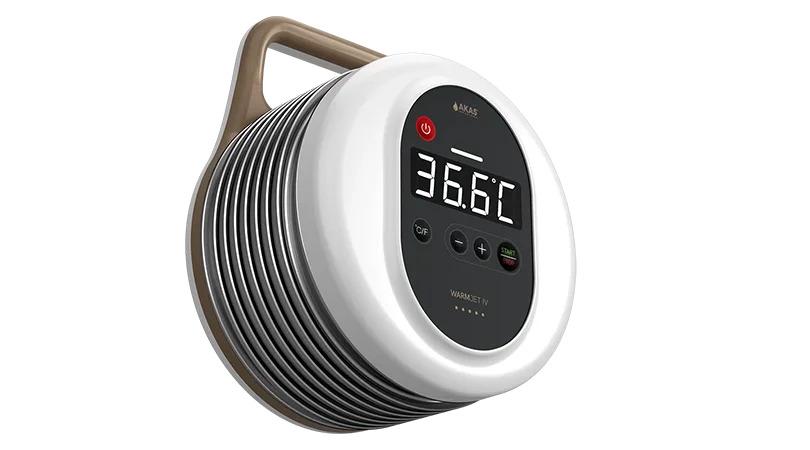Notifications

6 minutes, 31 seconds
-104 Views 0 Comments 0 Likes 0 Reviews

In the unpredictable environments of military operations and disaster response, medical teams face extreme conditions where every second and decision can mean the difference between life and death. From battlefield injuries to disaster-related trauma, maintaining a patient's core temperature is essential for survival. Fluid warmers play a vital role in this life-saving chain, delivering temperature-regulated IV fluids and blood that help stabilise critical patients in the most challenging settings.
Field hospitals and mobile medical units require equipment that is both rugged and reliable. Among the most essential tools in these scenarios are fluid warmer machines, specifically designed to function in unpredictable, often harsh conditions. These devices are crucial in preventing hypothermia and maintaining vital signs when patients are most vulnerable.
Trauma patients often arrive in hypovolemic shock, where rapid fluid administration is vital.
Unwarmed fluids can drastically drop core temperature, increasing mortality risks.
Hypothermia worsens bleeding and reduces clotting ability in patients with trauma.
In high-stakes environments like military combat or natural disasters, ensuring that IV fluids and blood products are administered at body-compatible temperatures becomes a cornerstone of advanced trauma care. Fluid warmers make this possible, offering immediate thermal regulation with precision.
Fluid warmer machines are engineered for portability, durability, and quick deployment—qualities that match the unpredictable nature of field care environments.
Prevention of Hypothermia
Warmed fluids help stabilise body temperature, reducing the incidence of cold-induced complications such as cardiac arrhythmia and delayed healing.
Improved Survival Rates
In combat zones and disaster-hit areas, warmed IV fluids significantly increase the chance of survival, especially for patients in haemorrhagic shock.
Faster Recovery
Normothermic fluids support better oxygen delivery and metabolic balance, leading to faster recovery in both short-term trauma and long-term care.
Compact and Field-Ready Design
Most fluid warmer machines are compact, lightweight, and built to withstand harsh environments like sand, humidity, and extreme temperatures.
Energy Efficiency
Many portable models require minimal power sources and can be connected to vehicle or battery-based systems, ideal for field use.
Rapid Deployment
These machines heat fluids in seconds to minutes, supporting emergency responders during golden hour interventions.
Military medics and disaster medical teams often face scenarios where conventional hospital equipment is inaccessible. Fluid warmers provide a safe, immediate alternative that saves lives in the field.
Combat Medics on the Frontline
Manage battlefield wounds with warmed fluids to stabilise shock.
Carry portable units during evacuations for on-the-go support.
Earthquake and Flood Relief Zones
Warm IV fluids for injured victims exposed to cold, damp environments.
Prevent hypothermia in paediatric or geriatric patients pulled from rubble.
Mobile Trauma Units
Offer prehospital care in ambulances or helicopters.
Ensure transfusions remain temperature-safe during transport.
Remote Field Clinics
Operate in low-resource settings without compromising fluid temperature.
Use battery-powered fluid warmer machines in refugee camps or tent hospitals.
Selecting the right fluid warmer for disaster or military medicine is a crucial decision. Focus on performance, ease of use, and field compatibility.
Quick Heat-Up Time
Ensure fluids reach the right temperature quickly without delays.
Portability
Lightweight and compact designs allow for easier mobility and deployment.
Rugged Construction
Devices must resist shocks, vibrations, dust, and moisture.
Battery or Multi-Power Source Operation
Machines should work with both standard and emergency power sources.
Compatibility with IV Bags and Blood Units
Must be safe and efficient with a wide range of fluid types.
Simple Controls
Intuitive user interfaces support fast operation even under stressful conditions.
Military protocols now often mandate the use of fluid warmers as part of field medical kits. The growing recognition of hypothermia as a "lethal triad" component—alongside coagulopathy and acidosis—has placed thermal fluid delivery at the forefront of combat medicine.
Similarly, NGOs and emergency response agencies increasingly include fluid warmer machines in disaster preparedness kits. With unpredictable climate patterns, floods, earthquakes, and conflict zones becoming more frequent, warmers are essential for first-line responders.
In times of crisis, from the battlefield to disaster-stricken areas, timely and thermally regulated care can mean survival. Fluid warmers and fluid warmer machines are more than medical tools—they are lifelines for critical patients in environments where traditional healthcare infrastructure may be limited or unavailable.
For institutions and emergency teams seeking dependable, high-performance solutions, it is essential to partner with trusted manufacturers who understand these high-pressure demands. Akas Infusion stands at the forefront of this mission, producing world-class drug delivery devices such as volumetric infusion pumps, built for accuracy, durability, and life-saving performance in even the most challenging settings.

